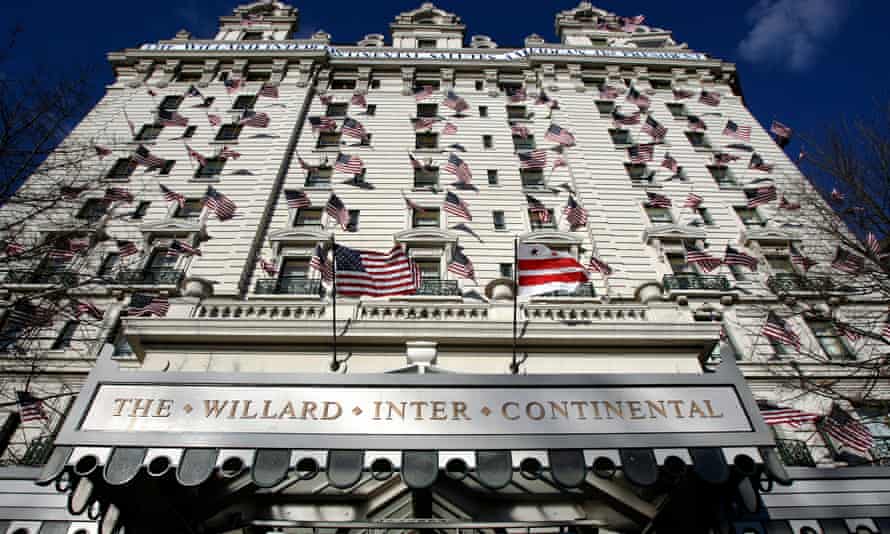What is Trump hiding? The Capitol riot-sized hole in White House call log | US
At 2.26pm on 6 January last year, Donald Trump picked up a White House phone and placed a call to Mike Lee, the Republican senator from Utah. The communication came at a very significant moment.
Thirty-seven minutes earlier, a riot had been declared by Washington DC police. Minutes after that the then vice-president, Mike Pence, was rushed out of the Senate chamber, where he had been presiding over Congress’s certification of Joe Biden’s victory in the 2020 election, and put into hiding.
Fifteen minutes before Trump made the call his supporters, exhorted by the sitting president to “fight like hell” against what he falsely claimed was a rigged election, broke through a window in the south front of the Capitol and entered the heart of American democracy.
The January 6 insurrection was under way.
Yet when you look for recorded details of Trump’s 2.26pm call which was made, as Hugo Lowell of the Guardian revealed, on an official White House landline, they are nowhere to be found. The Lee call was one of an unknown number that Trump made during a mysterious gap of 7 hours 37 minutes that exists in the call logs – precisely the timeframe of the Capitol attack.
Those missing call logs, disclosed by the Washington Post and CBS News, raise several burning questions – how did the records disappear? who carried out the excising? – but none more urgent than this: what was Trump trying to hide?
“A gap like this doesn’t happen by accident. It’s not a coincidence,” said Charlie Sykes, columnist at the Trump-resistant conservative outlet the Bulwark. “There is no innocent explanation here – somebody made the decision to rip up the record for the crucial hours of January 6 and there has to be a reason why.”
What Trump is trying to hide lies at the heart of the House committee investigation into the January 6 insurrection. The former president has consistently tried to block information flowing to the committee – pressuring his inner circle not to testify, tearing up documents before they were handed over.
The stakes in the tussle over evidence rose sharply this week when a federal judge said in a ruling that Trump “more likely than not … dishonestly conspired to obstruct” Congress on 6 January. That would be a criminal act.

There has never been any doubt that Trump inspired his supporters to descend on Washington on that fateful day, nor that he encouraged them to protest along the lines of the “big lie” that the election was stolen from him.
Three weeks before the insurrection he tweeted: “Big protest in DC on January 6th. Be there, will be wild!”
But Trump is a past master at making outrageous comments while simultaneously disguising or leaving ambiguous his actual intentions. What exactly did he mean by “will be wild!”? How far was he prepared to take that proposition? Critically, would the missing call logs covering the timeframe of the insurrection offer clues to his motivation?
One call that it is known Trump made within the black hole of those missing hours between 11.17am and 6.54pm was to Pence. Late on 6 January the incumbent president made one final attempt to persuade his deputy to commit an illegal act – to delay certification of Biden’s win in contravention of his constitutional duties.
According to a leaked account of the call to the New York Times, Trump cajoled Pence with the immortal words: “You can either go down in history as a patriot, or you can go down in history as a pussy.”
Pence went down in history as a patriot – by doing his constitutional duty and certifying the legitimate result. But that phone call marked an important point in the chronology of Trump’s coup attempt: it amounted to a point of no return – his last move to hang on to power through political persuasion.
Had Trump strayed beyond that point, he would have entered much darker territory. As Sykes put it: “When he got off the phone to Mike Pence, who did he call next? Once he knew the vice-president was not going to do his bidding, what next?”
David Frum, a former White House speechwriter for George W Bush, writing in the Atlantic, said there were two major lines of inquiry: did Trump give a go-ahead to the Capitol insurrection in advance, and did he coordinate in any way with the attackers.
The January 6 committee has its focus firmly locked on the so-called “War Room” – the gaggle of Trump’s close aides that gathered at the Willard hotel in Washington as the “command centre” of Trump’s efforts to subvert the election. They included his former strategist Steve Bannon, his lawyer Rudy Giuliani and John Eastman, the conservative law professor who prepared a detailed plan of how Trump could hold on to power illegitimately.

Read More:What is Trump hiding? The Capitol riot-sized hole in White House call log | US
